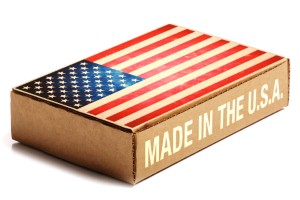'Made in The USA' Can Save Manufacturing Costs
September 28, 2012
With clients shopping online and in stores, it’s important to manage inventory wisely and be able to quickly increase or pull the plug on certain products. When a product isn’t selling well, a management team doesn’t want to be stuck with a massive amount of inventory that has yet to be shipped from across the globe. When production facilities are located in the U.S., it’s easier for businesses to move through the product quickly and make room for goods that will sell well.
While a product can arrive in days, or even hours, from across the country, it can take weeks for products to be shipped from overseas. Asking clients to wait a day before receiving their item is easier than asking them to wait three weeks while it is shipped from Asia. Managing inventory and stock is much easier when a company doesn’t have to worry about shipping time, complicated logistics and miscommunications that can lead to serious delays.
Trend forecasting
When your products are made at home, it’s easy to take advantage of local trends. When certain goods become more popular, it’s easy to have them made quickly and ready to sell in no time. Consumer demand may rise sharply if a product becomes particularly popular, and it’s much easier to manage production levels when a company’s manufacturing is close by. It’s easy to predict a trend when a business owner is local, and an L.A. company may be able to determine what they need before their supplier in China does.
Cutting costs
Moving production back to the U.S. doesn’t just help with inventory management and make it easier to change orders quickly. It’s also saving companies money on their production.
Many countries in Asia used to be known for their cheap labor and inexpensive supplies, which made it common for business to move their manufacturing facilities there. In the past few years, the cost of doing business in these traditionally inexpensive countries has been rising. This has made the U.S. a more attractive place to do business, and companies are noting the decreased costs and slowly moving their production back to the U.S.




Leave a Reply
Want to join the discussion?Feel free to contribute!